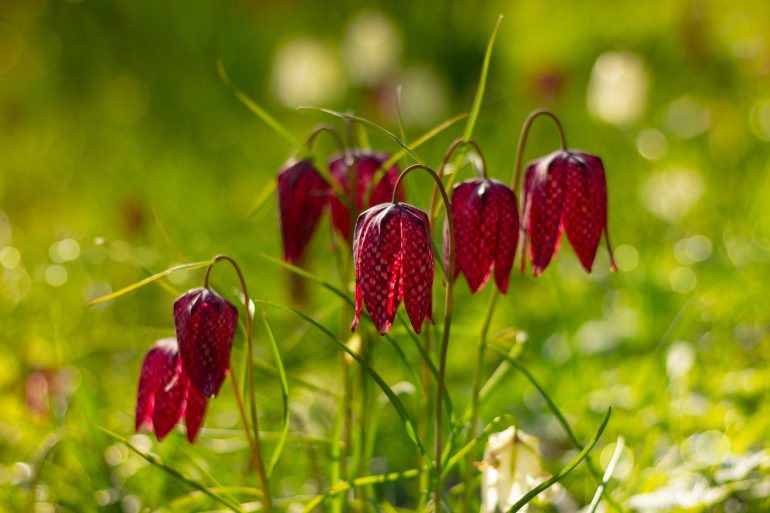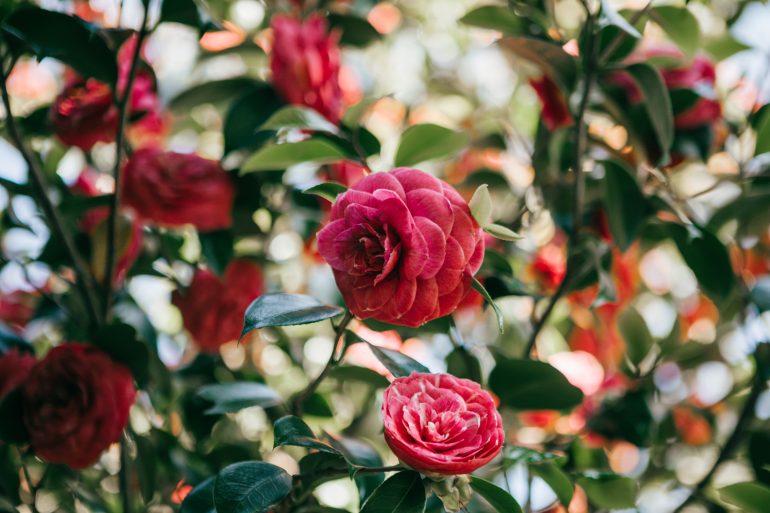From the awesome abundance of daffodils to the primroses peeking their way out of the undergrowth, the first month of spring says goodbye to winter frost and hello to warmer days, bringing forth the wonderful in-season flowers March has to offer.
This article on the flowers in season in March in the UK will guide you through the transition from February’s flora to the mosaic of colour a month later. We’ll also take a look at the blue flowers available in March.
The Magic of March

Snakes head fritillary (Credit: Maryna Petrenko-Shvets via Getty Images)
The world outside our doors is set to erupt in a wonderful kaleidoscope of scent and colour of in season flowers. March is a great month for a variety of beautiful blooms which ensure the dark winter months are well and truly behind us.
The most famous spring flower of all is the narcissus, otherwise known as the daffodil, and you’ll find them everywhere around the UK at this time of year, adding little rays of sunshine wherever they grow.
One of the most interestingly-named of the March in season flowers is the snake’s head fritillary, so called because of the snake-like shape of the flower heads. It has checked petals which has also given rise to the name chess flower.
Hellebores, with their white or pink flowers, have names such as winter rose or Christmas rose even though they’re not related to the rose family at all. They’re a great flower to liven up garden borders and some varieties provide a vital early source of nectar for bees.
The Captivating Tale of Camellias

The red camellias flower. (Credit: Carol Yepes via Getty Images)
Named after a Jesuit priest George Kamel whose Latin name was Camellus, camellias belong to a family called Theaceae and there are believed to be thousands of named varieties.
They’re native from the Himalayas to Japan and Indonesia, and they’re one of the most exotic flowers in season in March. Camellias are known for their ability to bloom in the cooler months. Most varieties of camellias flower between autumn and spring, which makes them an excellent choice for providing colour during the months when most other plants are dormant. They’re well known for their large and vibrant flowers, which come in a variety of stunning colours including pink, red, white and yellow.
Perhaps the most well-known cultivar of camellia is Camellia sinensis. It has been cultivated for thousands of years for its leaves, which are used to brew tea. This species is still the primary source of tea leaves today.
Beautiful Blue-ms

A stem of English bluebells (Credit: Fiona McAllister Photography via Getty Images)
One of the most attractive blue flowers available in March are called grape hyacinths, even though they’re not technically hyacinths. Muscari, as they’re known in the scientific world, are native to Eurasia and the flowers, which vary from pale blue to a very dark blue, resemble a bunch of grapes.
Another of the blue flowers available in March that can create truly astonishing carpets of flowers on woodland floors is Hyacinthoides non-scripta, better known as the common bluebell. These delicate sweet-scented blooms are so famous they’re protected under UK law from being uprooted on land where it naturally grows without the permission of the landowner.
There are a few species of blue anemone which sit among the in season flowers March has to offer. The Balkan anemone, known as the winter windflower, is a striking blue. Cultivars of the Anemone nemorosa, known as Royal Blue and Robinsoniana, produce shades of blue flowers from lavender to a deep blue.
Anemones can be found in a range of habitats, including mountains, meadows and woodlands. Some species of anemones are wild, while others are commonly cultivated in gardens for their beautiful, vibrant flowers.
March's Botanical Ballet

Spring yellow Daffodils. (Credit: Jacky Parker Photography via Getty Images)
As the UK embraces the vibrancy of spring, the natural world responds in kind, offering a diverse selection of flowers which bloom in March. These floral gifts, from the cheerful daffodils to the exotic camellias, add a splash of colour and joy to the UK’s gardens and wild spaces alike.












